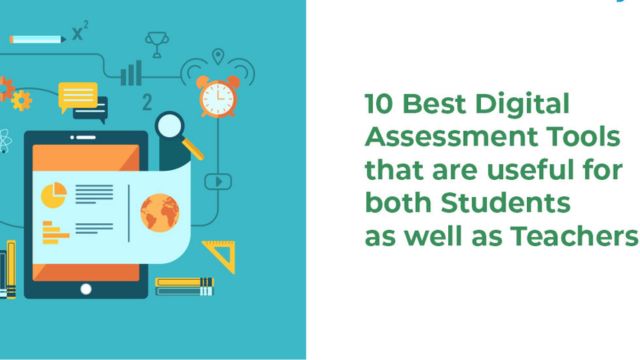The need of including technology into instruction and learning has never been more important as education develops in the digital age. From streamlining homework and improving communication to offering fresh approaches of learning and group projects, digital technologies have grown indispensable in contemporary classrooms.
Whether you are a teacher running a virtual or hybrid learning environment or a student trying to increase output, here are ten crucial digital tools every educator and student should be conversant with in 2025.with in 2025.
1. Google Workspace for Education
Google Workspace offers a suite of tools tailored for educational use, including Google Docs, Google Slides, Google Forms, Google Drive, and Google Classroom. These tools make it easy to manage assignments, collaborate in real time, and store resources in the cloud.
Teachers can create and distribute assignments, track student progress, and provide feedback in one centralized system. Students can submit work, participate in discussions, and access learning material from any device.
2. Khan Academy
Khan Academy is a nonprofit educational platform that provides free, high-quality content across subjects such as mathematics, science, computer programming, and economics. It is widely used in schools and for independent learning.
The platform offers personalized dashboards, practice exercises, and instructional videos aligned with global academic standards. It supports self-paced learning and is ideal for exam preparation or supplementary study.
3. Quizlet
Quizlet is an online study tool that allows users to create digital flashcards and quizzes. With different modes such as Learn, Test, and Match, students can improve memory retention and reinforce key concepts through active recall.
Teachers can create custom study sets to support class topics and assign them to students for interactive revision, making it a helpful tool for test preparation and daily practice.
4. Microsoft OneNote
Microsoft OneNote is a powerful digital notebook for organizing notes, ideas, and class materials. It supports multimedia content, handwriting, and stylus input, making it highly adaptable for various learning styles.
Teachers can prepare lesson plans, while students can take organized notes, annotate PDF files, and collaborate on shared notebooks. Its integration with Microsoft Teams also adds value in institutional settings.
5. Zoom and Microsoft Teams
For virtual classrooms, meetings, and webinars, Zoom and Microsoft Teams have become indispensable. Zoom is popular for its user-friendly interface and breakout room capabilities, while Teams is preferred by institutions already using Microsoft 365 for its integrated collaboration features.
These tools facilitate real-time interaction, screen sharing, file distribution, and recording sessions—ensuring consistent and accessible communication between educators and students.
6. Grammarly
Grammarly is an AI-based writing assistant that helps users improve grammar, clarity, and tone. It is especially useful for students writing essays, assignments, or emails and for teachers reviewing academic content.
In addition to grammar correction, Grammarly also checks for plagiarism and offers suggestions to enhance vocabulary and sentence structure. This makes it a practical tool for maintaining academic writing standards.
7. Canva for Education
Canva for Education is a free version of Canva that offers premium features to teachers and students. It allows users to create visually appealing presentations, posters, infographics, and lesson content.
With ready-to-use templates and a simple drag-and-drop interface, it enhances creativity and helps communicate ideas effectively in both classroom and online settings.
8. Edmodo and Moodle
Edmodo and Moodle are robust learning management systems (LMS) designed specifically for educational use. These platforms support course management, grading, content sharing, and communication between teachers and students.
They provide a structured virtual learning environment that enhances engagement and enables educators to streamline their teaching processes, especially in hybrid and online classrooms.
9. Trello and Notion
Trello and Notion are productivity tools that can help students manage assignments and deadlines, and teachers keep track of lesson planning and administrative tasks. Trello uses a board-and-card system for task tracking, while Notion combines notes, databases, and calendars in a single workspace.
These tools encourage better organization, time management, and collaboration for academic projects.
10. AI Tools like ChatGPT
AI-based platforms such as ChatGPT are becoming increasingly popular in education. Students use them for summarizing content, clarifying concepts, and brainstorming ideas, while teachers use AI to generate quiz questions, lesson outlines, or even automate repetitive tasks.
While these tools must be used ethically, they offer significant time-saving benefits and support personalized learning experiences.
Conclusion
Learning success in 2025 depends on mastery of digital technologies; it is no more optional. Along with supporting regular academic activities, these sites foster critical 21st-century skills including digital literacy, communication, creativity, and autonomous learning.
Starting to include these technologies into their everyday routines will help teachers and students keep ahead in a world going more and more technologically driven and competitive.
Unlock the future of education with Digital India MIB. Discover trusted content on digital tools, government schemes, and career-focused learning. Whether you’re a student, educator, or policy follower, our platform delivers insights that matter. Start exploring today and stay one step ahead in the digital era.

